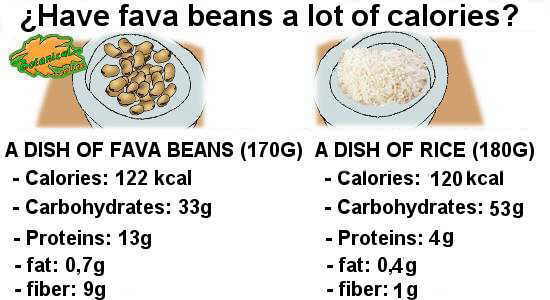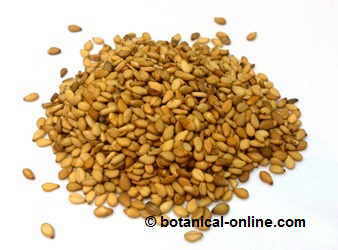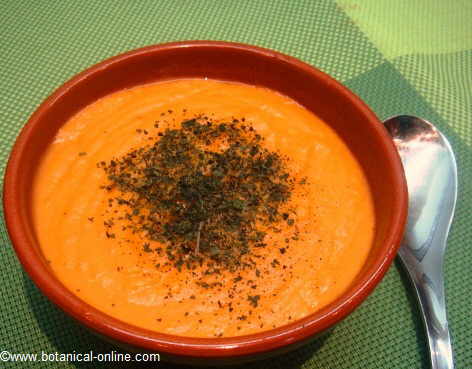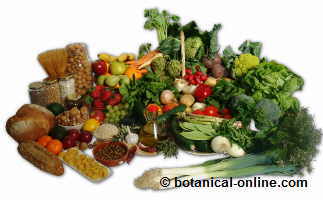Contents
Are legumes fattening?
VEGETABLES FOR WEIGHT LOSS
Are pulses fattening?
Sometimes it is popularly said that legumes are fattening or provide too many calories to the diet. This statement is not true, as discussed below.
Pulses, legumes or leguminous plants are plants of the Papilionaceae family, where we find such current vegetables as beans, fava beans, chickpeas, peas, lentils, etc. All they are characterized because their fruits are pods, inside of which edible seeds can be found.
They contain nutrients in varying proportions depending on the type of legume, but in general, the major component are carbohydrates, followed by protein, fiber, fats, minerals and vitamins.
How many calories legumes have?
It is said that legumes contain many calories but this is not true. If we compare legumes with other food such as rice or potatoes, the number of calories per serving they amount is equal or lower.
See this statement in the following table:
Calories provided by some foods per serving | |
|---|---|
| Food (serving) | Calories |
| A large potato, boiled (200 g.) | 154 Kcal |
| Dish of peas, boiled (160 g.) | 125 Kcal |
| Dish of broad beans or fava beans, boiled (170 g.) | 122 Kcal |
| Rice dish, boiled (180 g.) | 120 Kcal |
| Glass of orange juice | 120 Kcal |
Beans dish, boiled (170 g.) | 113 Kcal |
Chickpea dish, boiled (160 g.) | 99 Kcal |
| 1 tablespoon oil | 90 Kcal |
| A banana | 88 Kcal |
| Table different food calories per serving, to establish a quantitative comparison. Rows highlighted in yellow with calories of legumes. Source: Department of Agriculture (USDA). | |
In the table above you can see the amount of calories that different foods bring us. Just looking at the figures shows that legumes contribute with amounts of calories similar to those of other foods such as rice or potatoes. Legumes are not a food rich in calories.
It has to be added that only by analyzing the calories the different foods provide is a mistake, since equal calories may produce different effects on metabolism, depending on many factors such as the type of carbohydrates it contains (simple sugar, for example, triggers the production of insulin, which in turn stimulates production of body fat)
It is worth noting that legumes provide a high amount of protein than most plant foods. For example, for the same protein containing in a dish of baked beans, 3 courses of boiled rice are needed.
Quality of calories: Legumes are fattening us?
Legumes are a food compatible with a healthy diet and weight loss diets.
Slimming by means of counting calories is only a increasingly out of step dietitian concept for different reasons. Beyond the total calories of food, we should analyze the quality of these calories, that is to say, the composition of a food, for example, if the calories come from proteins, sugar or fat.

Illustrative image of a nutritional comparison between a ration of cooked rice and a boiled fava beans one. © Botanical-online.com Drawing: ©Dibujosparapintar.com
Satiating power of legumes
Legumes are rich in complex carbohydrates, which, by their nature, and along with fiber which provides the food itself, offer us energy that is gradually absorbed, that is to say, the body assimilate these calories much more slowly than the sugar that a chocolate provides, for example.
By means of assimilating carbon hydrates more slowly, not high insulin spikes occur, as it happens in other foods that are rich in simple sugars and low in fiber.
Legumes to lose weight
Legumes are characterized by their ability to pour glucose gradually into the bloodstream. This is obtained by the metabolism of complex carbohydrates.
When you eat vegetables, their carbohydrate digestion is slow, regulated because it contains fiber and protein, and the action of digestive enzymes that are responsible for breaking down complex carbohydrates into glucose.
For this reason, glucose of pulses is being incorporated into the blood slowly.
This control of blood sugar is very interesting in different situations:
Legumes for obesity
They are a very satisfying food that provides a feeling of fullness for a long time, maintaining stable blood glucose levels without causing the typical ups and downs of foods high in sugar and low in fiber. A good blood sugar control determines the body to feel full and not hungry for longer without eating between meals.
This point would justify the routine use of legumes for human consumption, and would go against the view that legumes are fattening. Instead, legumes can satiate us without us being obliged to eat other “empty food” that would provide only a momentary satiety. Legumes are perfect when you want to lose weight.
* Related information: How much legumes a day?
Legumes for diabetes.
The preceding point makes legumes a very suitable food for diabetes as legumes provide a lower carbohydrate content than that of cereals, and a nutritional value in vitamins, minerals, fiber and protein much higher.
In diets for diabetes, it is recommended to combine legumes with cereals to improve the assimilation of carbohydrates. For example, combining rice or potato with beans or lentils. The fiber in vegetables helps the body to better assimilate the carbohydrates they provide. Furthermore, by combining cereals and legumes complete plant proteins is obtained.
Related information: Problems digesting legumes
![]() More information on legumes.
More information on legumes.








